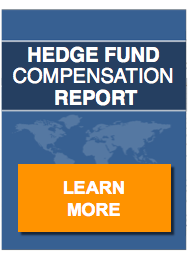As most are aware, the Justice Department has been cracking down on no-poaching agreements among employers, making the task of retaining talent all the more arduous.
Best Practices
Most would agree that increased compensation is the principal motivation for lateral job moves. So-called no-poaching agreements are no longer a viable deterrent to this risk.
Best practice is to make certain that employee compensation is competitive in the job marketplace. Discussions with other employers are not the preferred method of establishing a competitive salary/bonus structure because such practices carry the risk of accusations of wage fixing.
How then does one determine “what’s market” without bringing down the wrath of the Department of Justice?
Is There a Safe Harbor?
Fortunately, Justice Department guidelines have been implemented that should protect employers from legal action. According to Paul R. Hitchcock’s article in the Antitrust and Competition Blog, they are as follows:
- The exchange of compensation information is managed by a neutral third party
- The information exchanged is relatively old
- The information is aggregated so that no recipient can associate a participating company with particular information
- There are enough aggregated sources to prevent recipients from linking particular data to particular companies
As with most things involving the government, the above guidelines are cumbersome and costly to implement. Engaging a neutral third party, aggregating the data in a manner that does not reveal individual sources, ensuring that a sufficient number of source companies participate, that participating individuals cannot be linked to particular companies, and that the salary/bonus information is dated—these are daunting and costly tasks.
Small and medium sized hedge funds may not have the resources to establish an in-house program. Even large-sized funds may choose not to make such an investment. However, all hedge funds are mindful that failing to act poses a risk… the loss of talented personnel with highly portable skills.
Hedge Fund Compensation Report
The 2018 Hedge Fund Compensation Report meets Justice Department guidelines.
The guidelines require that the information be managed by a neutral third party. The publishers of the Hedge Fund Compensation Report are neutral; having no formal affiliation to any hedge fund firm. Information qualifies as dated, having been gathered in the last quarter of the preceding year. Information is aggregated in a manner that does not reveal data that can be tied to a specific hedge fund firm and lastly, the Hedge Fund Compensation Report gathers information from hundreds of hedge fund firms, making it impossible to link particular information to particular firms.
In short, the 2018 Hedge Fund Compensation Report is a cost effective means of ensuring that hedge fund firms have the latest possible compensation data. Armed with this information, hedge fund firms can determine how their compensation levels compare to the broader hedge fund industry and where adjustments must be made to enhance personnel retention.
Final Thoughts
The greatest risk to hedge fund firms may lie in informal private agreements between managers who encounter colleagues at competing firms and make agreements not to solicit or hire each other’s personnel. Such informal agreements do not benefit from a review by in-house counsel and pose the greatest risk to the firm. It is incumbent upon compliance officers to make clear the risks that such informal agreements pose to the firm.


